Today’s Current Affairs: 21staug 2023 for UPSC IAS exams, State PSC exams, SSC CGL, State SSC, RRB, Railways, Banking Exam & IBPS, etc
Table of Contents
Sulina Channel:
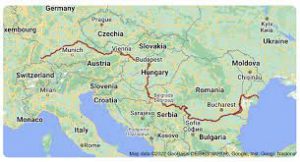
The Sulina Channel has provided Ukraine with an alternative trade route for its grain after Russia withdrew from the Black Sea grain deal.
- Russia, targeted ports and grain storage facilities along the Danube River in Ukraine in overnight drone strikes on August 16, 2023.
- Russia also withdrew from the Black Sea grain deal in July 2023.
- Amidst this, the Danube Delta has provided Ukraine with an alternative passage in the form of the Sulina Channel to help secure its grain requirements.
Sulina Channel:-
- Location Southeastern part of Romania.
- Length: approximately 64 km long.
- It connects the Danube River, with the Black Sea. (Loss of the ‘Moskva’ & Black Sea)
- It provides a direct route for maritime transportation
- The construction of the Sulina Channel dates back to the 19th century.
- It was developed to improve the navigation of large ships and vessels in and out of the Danube Delta.
COVID-19 New Variant : EG.5.1
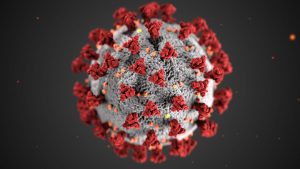
Doctors have urged people to stay vigilant against COVID-19 variant EG.5.1.
- On August 9, the World Health Organization (WHO) designated the latest COVID variant, EG.5.1, unofficially known as, Eris, as a variant of interest.
- The overall risk evaluation by WHO places this variant at a low level.
COVID-19 variant EG.5.1.:-
- First documented: February 17, 2023.
- The majority of these sequences originated from China, followed by the United States of America, the Republic of Korea, Japan, Canada, and Australia.
- It is a descendant of Omicron.
- It is a descendant of the XBB 1.9.2 variant sharing a similar spike amino acid profile with XBB 1.5.
- 5 carries an additional F456L amino acid mutation in the spike protein, compared to the parent XBB.1.9.2 subvariant and XBB.1.5.
- Spread: According to the WHO, infections have been reported in 51 countries, including China, the US, the Republic of Korea, Japan, etc.
Gabon Announced Debt-For-Nature Swap Deal:
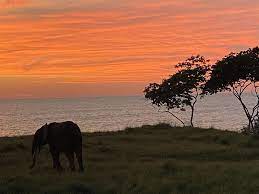
Gabon announced a $500 million debt-for-nature swap deal for marine conservation.
- Gabon on August 15, 2023, announced a $500 million debt-for–nature swap.
- This is the world’s second-largest deal signed under blue bond to refinance the country’s debt and conserve marine resources.
- Blue bonds: financial instruments that are designed to support sustainable marine and fisheries projects.
- In Africa, it is the largest such deal signed by any country to refinance its debt and conserve marine resources.
- Debt-for-nature swaps allow heavily indebted developing countries to seek help from financial institutions in the developed world with paying off their debt if they agree to spend on the conservation of natural resources.
- Usually banks in developed countries buy the debts of such counties and replace them with new loans which mature later.
- These have lower interest rates.
Gabon:-
- Gabon is a central African country.
- It is located on the Atlantic Ocean.
- It borders Cameroon, Equatorial Guinea, and the Republic of Congo.
- It is sparsely populated, with a population of 2.3 million (2021) and forests covering 85% of its territory.
- It is rich in natural resources.
- It is the fourth largest oil producer in Sub-Saharan Africa.
- It posted strong economic growth over the past decade, driven mainly by oil and manganese production.
India’s First 3D-Printed Post Office : Bengaluru

It has been inaugurated in Bengaluru’s Cambridge Layout. The post office was constructed in just 43 days, ahead of schedule, with technological support from IIT Madras and guidance from Professor Manu Santhanam.
- 3D printing, also known as additive manufacturing, involves creating three-dimensional objects layer by layer using a computer-created design.
- This process is used in various industries, and its popularity has grown due to advancements that have reduced errors and increased efficiency.
- The technology has been used in sectors like automotive, aerospace, and healthcare, enabling the creation of objects ranging from simple items to complex moving parts.
NASA’s STEREO-’s Earth Flyby:

In a significant development, NASA’s (National Aeronautics and Space Administration) Solar Terrestrial Relations Observatory (STEREO-A) spacecraft has made its first Earth Flyby, nearly 17 years after its initial launch.
- During the Earth flyby, STEREO-A will collaborate with Nasa’s Solar and Heliospheric Observatory (SOHO) and Nasa’s Solar Dynamics Observatory (SDO), enhancing its observations.
- This collaboration aims to optimize the spacecraft’s stereo vision to capture varying-sized solar features at different distances.
STEREO-A :
- STEREO-A (A stands for Ahead), along with its twin STEREO-B (B stands for Behind), was launched in 2006 to study the Sun’s Behavior by charting Earth-like orbits around it.
- Their primary goal was to provide a stereoscopic view of the Sun, enabling researchers to study it from multiple perspectives.
- In 2011, STEREO-A achieved a pivotal milestone by reaching a 180-degree separation in its orbit from STEREO-B.
- This spatial arrangement allowed humanity to observe the Sun as a complete sphere for the first time, offering crucial insights into its complex structure and activity.
- STEREO-B broke contact with mission control in 2014 after a planned reset (B’s mission officially ended in 2018).
Kalka-Shimla Railway Line:

Heavy rain and floods in Himachal Pradesh have battered the 94-km-long Kalka-Shimla railway line, a UNESCO World Heritage Site.
- Kalka-Shimla Railway line was declared a UNESCO World Heritage Site on July 8, 2008.
- It is located at an elevation of 2,152 ft above sea level in Haryana, to the capital of Himachal Pradesh, at 6,808 ft.
- The narrow gauge “toy train” passes through 18 stations, 102 tunnels, and over 988 bridges.
- It offers majestic views for most of the route. Passengers see breathtaking valleys, covered with pine, oak, and deodar trees.
UNESCO:
- It stands for United Nations Educational, Scientific and Cultural Organization.
- It is specialized agency of the United Nations(UN).
- The constitution, which entered into force in 1946, called for the promotion of international collaboration in education, science, and culture.
- Headquarters: Paris, France.
Floating Interest Rate : RBI

The Reserve Bank of India (RBI) recently issued detailed guidelines to reset floating-interest rates on Equated Monthly Instalments (EMI)-based personal loans.
- Floating Interest Rate is an interest rate that changes periodically.
- The rate of interest moves up and down, or “floats,” reflecting economic or financial market conditions.
- A floating interest rate can also be referred to as an adjustable or variable interest rate because it can vary over the term of a debt obligation.
- The change in interest rate with a floating rate loan is typically based on a reference, or “benchmark”, rate that is outside of any control by the parties involved in the contract.
- The reference rate is usually a recognized benchmark interest rate, such as the prime rate, which is the lowest rate that commercial banks charge their most creditworthy customers for loans (typically, large corporations or high net worth individuals).
- A floating interest rate uses a reference rate as the base.
- In order to arrive at the floating rate, a spread (or margin) is added to the reference rate.
- Floating Interest Rate = Base Rate + Spread
- Floating interest rates can be modified quarterly, half-yearly or annually.
- Several factors tend to influence the calculation of floating interest rates. Some of the economic factors are,
- Repo rate
- Government’s monetary policies
- Inflation rate
- Fiscal deficit
- Global and foreign interest
Pradhan Mantri Jan Dhan Yojana : Crossed The 50 Crore Mark
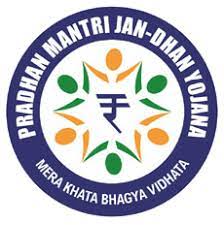
The finance ministry recently said the total number of Jan Dhan accounts in the country has crossed the 50 crore mark, with 56 per cent of the accounts belonging to women.
- Pradhan Mantri Jan Dhan Yojana (PMJDY) is a National Mission for Financial Inclusion launched in August 2014 to ensure access to financial services, namely, Banking/ Savings & Deposit Accounts, Remittance, Credit, Insurance and Pension, in an affordable manner.
- It envisages universal access to banking facilities with at least one basic banking account for every household, financial literacy, access to credit, insurance and pension.
- The plan also envisages channelling all Government benefits (from Centre / State / Local Body) to the beneficiary’s accounts and pushing the Direct Benefits Transfer (DBT) scheme of the Union Government.
- Eligibility:
- The applicant should be an Indian National.
- Any individual above 10 years can open a bank account.
- If minors above ten years apply, they will require support from their legal guardians to administer their PMJDY account.
- Jan Dhan Account: An individual can consider opening an account under this scheme with any bank branch or Business Correspondent (Bank Mitr) outlet.
- Further, accounts opened under PMJDY can be opened with zero balance.
- However, if the account holder wishes to get a chequebook, he/she will have to fulfil the minimum balance criteria.
- The account holders under this scheme will be given a RuPay debit card which can be used across all ATMs for cash withdrawal.
- Individuals opening a Jan Dhan account are subject to be recipients of certain benefits. They are
- Accidental Insurance Cover: It provides accidental insurance of ₹1,00,000 to the holders of non-premium cards, while those with premium cards can avail up to ₹2,00,000.
- People holding a RuPay Debit Card under PMJDY will be eligible for this insurance.
Tachymenoides harrisonfordi : New Species Of Snake

Researchers have named a recently discovered species of snake after actor Harrison Ford.
- Tachymenoides harrisonfordi was discovered in May 2022 by a team of researchers from the United States, Germany and Peru.
- It was discovered in the Peruvian Andes mountain region.
- It measures 16 inches (40.6 centimetres) in length and is yellowish-brown with scattered black blotches, a black belly and a vertical streak over its copper-coloured eye.
- This is the third animal species to be named after Ford. Earlier, an ant (Pheidole harrisonfordi) and a spider (Calponia harrisonfordi) were named after him.
White-Bellied Sea Eagle:

White-bellied sea eagles in India are beginning to emulate their counterparts in Australia and Thailand by making their homes on power towers holding high-tension wires which poses a risk to the species, according to a recent study.
- White-Bellied Sea Eagle is a large diurnal bird of prey.
- Scientific Name: Haliaeetus leucogaster
- They are found throughout Southeast Asia.
- They range north to south from southern China to Australia and Tasmania, and west to east from India to New Guinea.
- Their range includes the islands of Southeast Asia, such as Singapore, Indonesia, and the Philippines.
- They live primarily in terrestrial habitats near the ocean, especially coasts, islands, and estuaries, but they also live in forested areas with access to smaller bodies of water, such as lakes, ponds, and rivers.
- Most white-bellied sea eagles live at elevations around 900 m, with the highest elevation recorded at 1,700 m.
- They average 75 to 84 cm long, have a 1.78 to 2.2 meter wingspan, and weigh 2.2 to 3.0 kg, as adults.
- The head, neck, belly, thighs and distal tail-feathers are white, while the back, wing coverts, primary wing, and proximal tail-feathers can be dark gray to black.
- All white-bellied sea eagles have dark-brown to black eyes.
- The relatively short legs and feet of these eagles are scaled and featherless, and can be light-gray to cream in colour with large black talons.
- Conservation Status:
- IUCN: Least Concern
Psoriasis Awareness Month 2023:

Every year, August is marked as Psoriasis Awareness Month.
- Psoriasis is a chronic autoimmune condition that causes the rapid buildup of skin cells. This buildup of cells causes scaling on your skin’s surface.
- It causes a rash with itchy, scaly patches, most commonly on the knees, elbows, trunk and scalp.
- It is a common, long-term (chronic) disease with no cure.
- It can be painful, interfere with sleep and make it hard to concentrate.
- The condition tends to go through cycles, flaring for a few weeks or months, then subsiding for a while.
- It is not contagious.
- An over-reactive immune system that creates inflammation in your skin causes psoriasis.
- If one have psoriasis, your immune system is supposed to destroy foreign invaders, like bacteria, to keep you healthy and prevent you from getting sick. Instead, your immune system can mistake healthy cells for foreign invaders.
- As a result, your immune system creates inflammation or swelling, which you see on the surface of your skin as skin plaques.
- Common signs and symptoms of psoriasis include:
- raised, inflamed patches of skin that appear red on light skin and brown or purple on dark skin;
Yellow-Legged Hornet : Threat To Pollinators
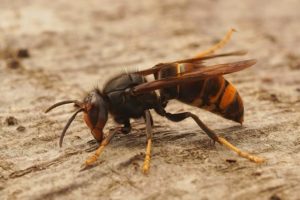
The first live specimen of a yellow-legged hornet, which “poses a threat to honeybees and other pollinators,” was recently detected in the wild in the United States.
- The Asian hornet,also known as the yellow-legged hornet or Asian predatory wasp, is a species of hornet indigenous to Southeast Asia.
- Scientific Name: Vespa velutina
- It is a predatory insect that commonly feeds on other social bees and wasps, including honey bees.
- This species has become invasive in several parts of the world, where it poses a threat to local ecosystems and bee populations.
- It is distinct from the infamous Asian Giant Hornet (Vespa mandarinia), often referred to as the “murder hornet,” which is a different and larger species found in parts of Asia, including Japan.
- While both species are predators of bees, the Yellow-Legged Hornet has become a particular concern in parts of Europe due to its invasive nature and impact on local ecosystems.
- It is relatively large, with adults typically measuring between 2 to 3 centimetres (0.8 to 1.2 inches) in length.
- It has a dark brown or black body with a distinctive bright yellow or orange band on its fourth abdominal segment.
- It has yellow legs, which is a key identifying feature.
- It is a very aggressive species and its sting is very painful.
- They are carnivorous and primarily feed on other insects, especially bees and wasps.
- They are known to be skilled hunters of honeybees.




